

Kallepia – a small village in the hills surrounding Paphos. And hugging the slopes is a tiny church with a big secret. It was our first weekend of freedom, post-lockdown, and we were going to find it.
I’ve lost count of how many weeks we’d been in lockdown. The hardest part for me was not being able to get out and explore the island. I loved the homeschooling, the family bonding, the wildlife watching from my back garden. But blimey, we were ready to get out by the time lockdown was lifted!
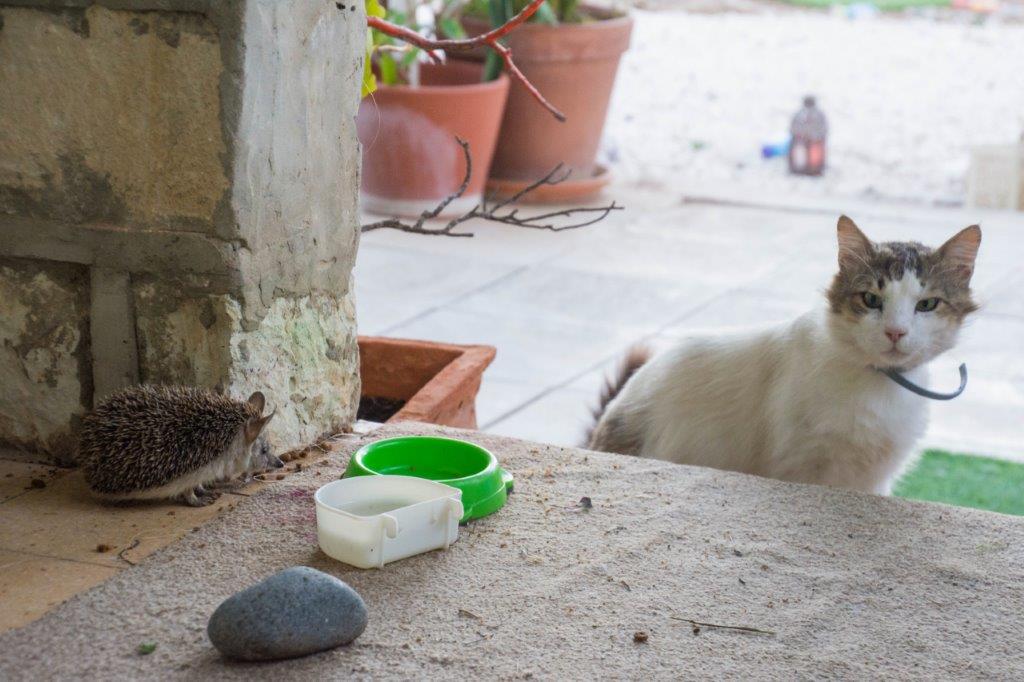
During lockdown, I found the fabulous Paphos Life blog, written by someone who is a kindred spirit when it comes to exploring remote, abandoned places and looking into every nook and cranny. It was on this blog that I read about the Agios Konstantinos and St Helen chapel, a remote church, hiding something very special. But would I have the guts to actually explore it?
I would never have found it, or even heard about it, if it hadn’t been for Paphos Life. It sits between Tsada and Kallepia, which we got to via the B7 Paphos to Polis road. Luckily, it’s shown on Google Maps, otherwise we’d have never found the right track to turn down. The church isn’t signposted anywhere.


You can’t even see the Kallepia church until you make a sharp left turn down the final track. And there it is. Tiny and secluded, surrounded by trees and hillside.

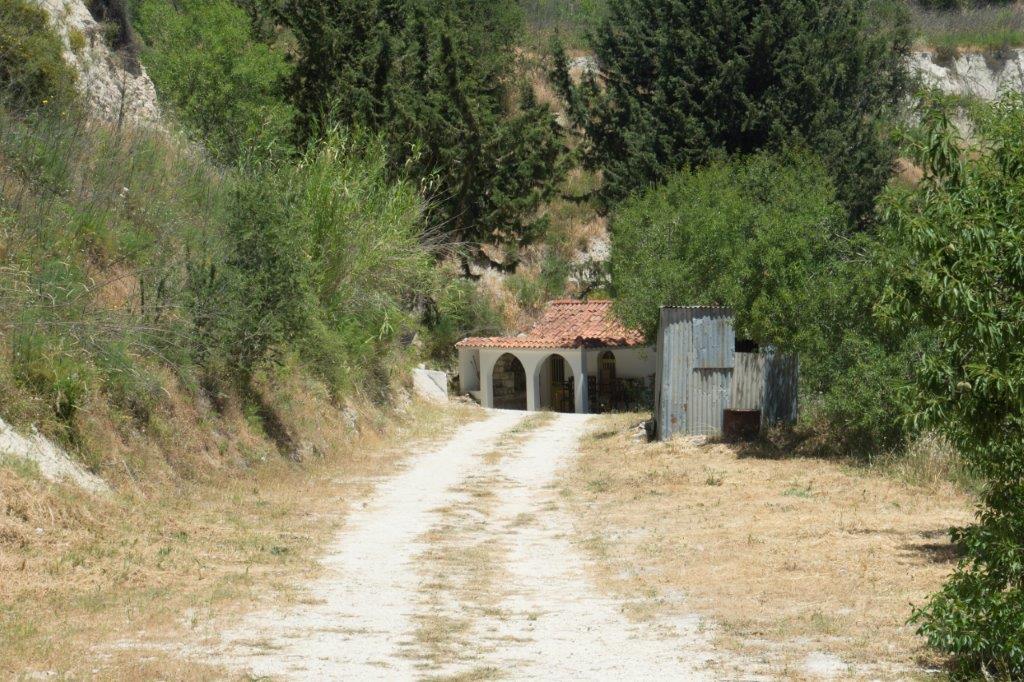
The church is well-maintained and clearly still in use. Its crisp white walls are surrounded by chairs and benches. Birds chatter in the trees above. It has an air of tranquility and beauty.
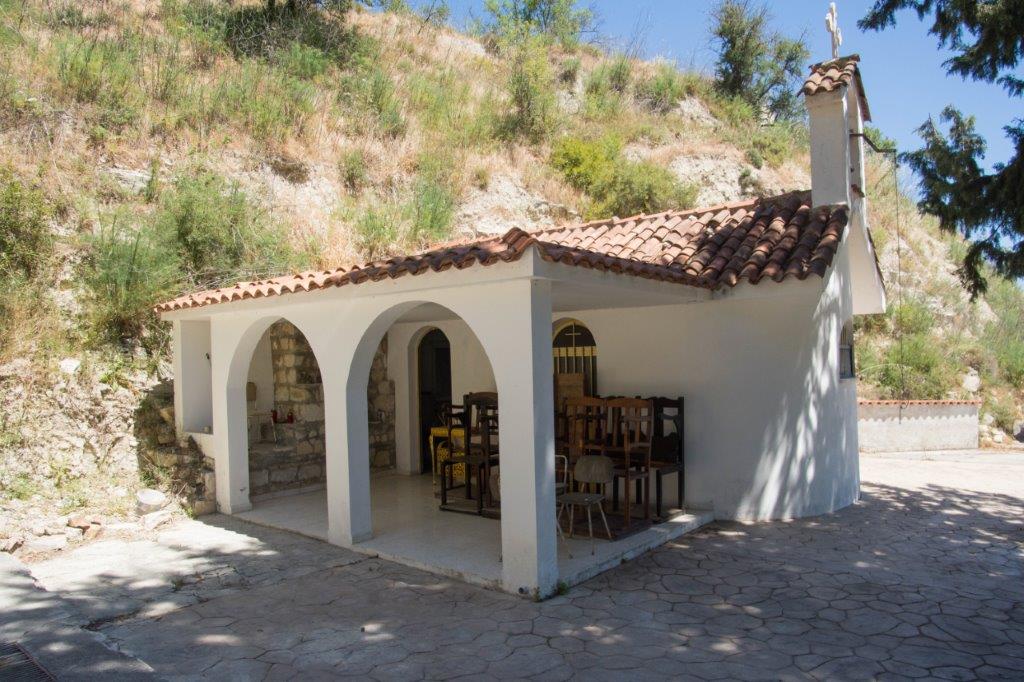
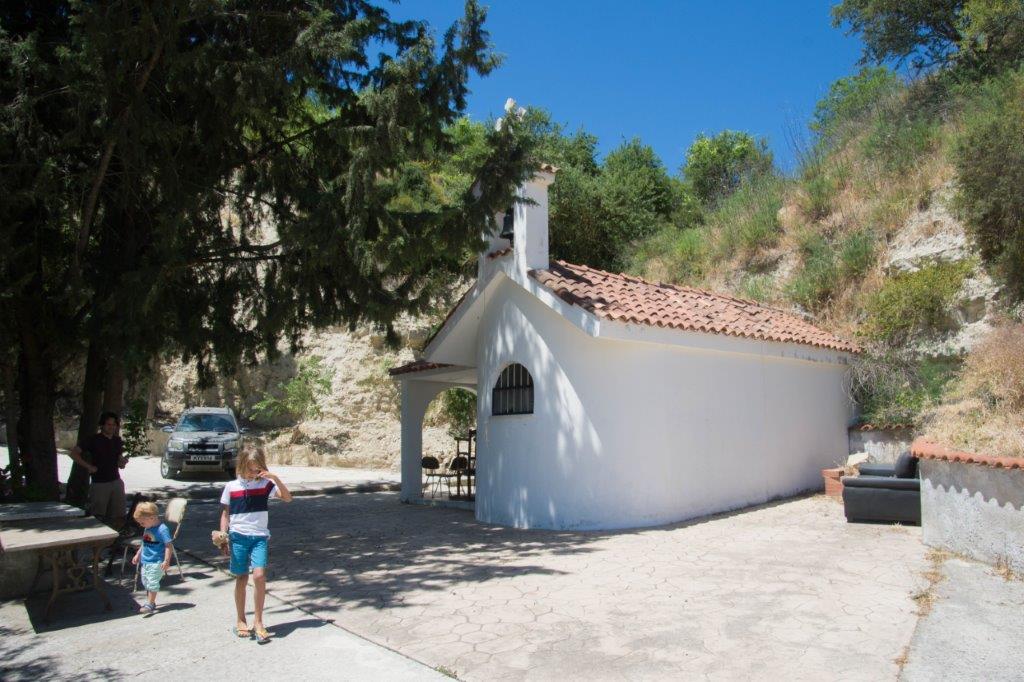
A blue portaloo looks out on a stunning valley below. God, it was great to be out!

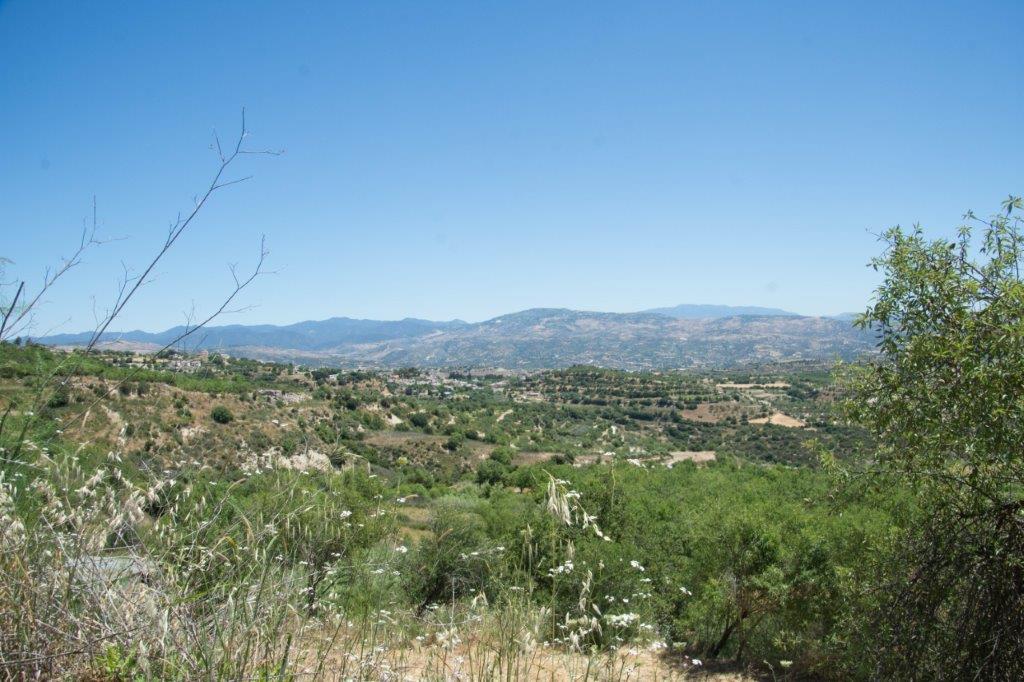
There was just one problem – the church looked locked up. There was no one else there and the door was closed, with bars across the windows. My heart dropped. But there was relief too. I was secretly a bit nervous about exploring this church’s hidden side.
‘I’ll just check the door,’ I called back to my family.
It opened.
I felt a zing of adrenaline.
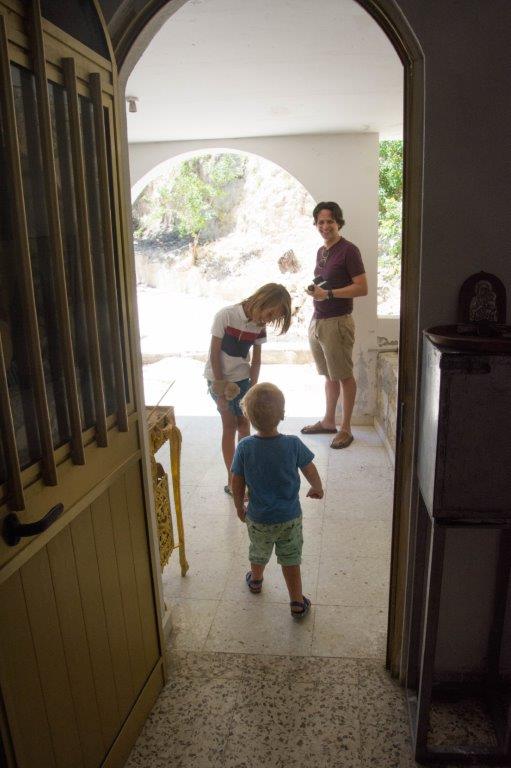
We slowly and quietly entered the chapel. It was a tiny but much-loved place of worship. Icons covered the walls and a thick red curtain concealed the altar at the far end. A pile of candles sat in a corner, ready for use.
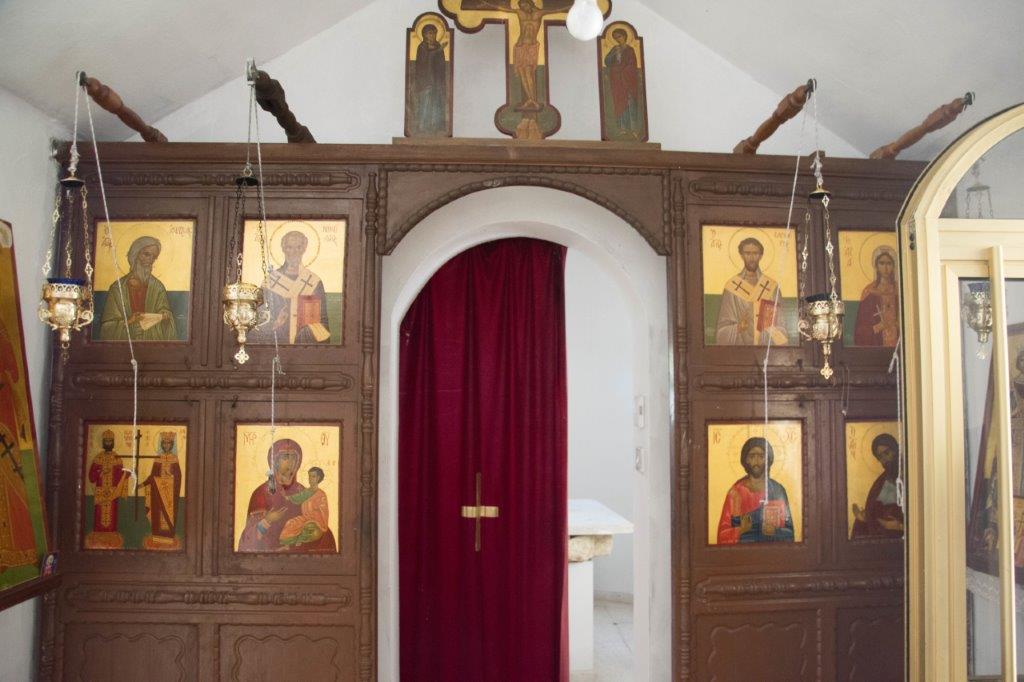
I turned around and there was The Door. A nondescript, slightly grubby metal door. I absolutely wouldn’t have noticed it if I hadn’t already known what this church was hiding. But it would probably be locked, right? Hope mixed with excitement.
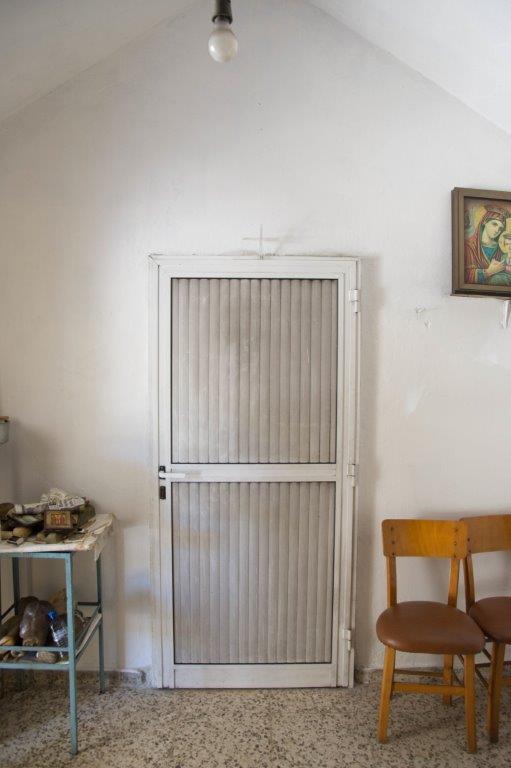
I pressed on the door handle. It was unlocked. I felt a weird sense of fear about opening it. Knowing that I was absolutely going to explore what was beyond that door. Even if I didn’t want to.
I opened it all the way.
‘Wow!!’ we all gasped.
‘Oh my god.’ I said.
The door opened onto a tunnel that disappeared into the side of the hill.
And in real life, it was a lot smaller than it looks in the photos.
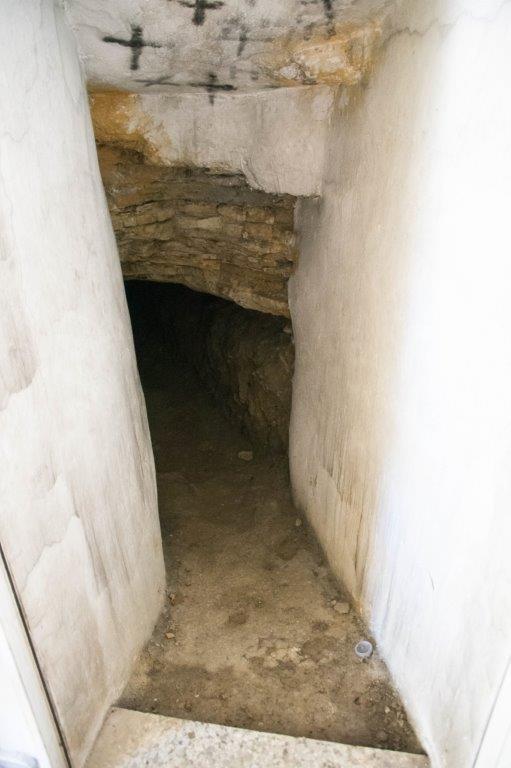
I descended a few steps to take a peak into the tunnel. Black crosses had been painted overhead, a sign that this place was sacred.
I shone my ‘Tomb Torch’ into the darkness. And I saw – absolutely nothing. Just more darkness.
My torch wasn’t powerful enough.
The torch on Matt’s phone was brighter and we could see a low tunnel cutting into the hillside, tree roots breaking through the ceiling.
Were we really going in there? With a two year-old in tow?
Of course we were.
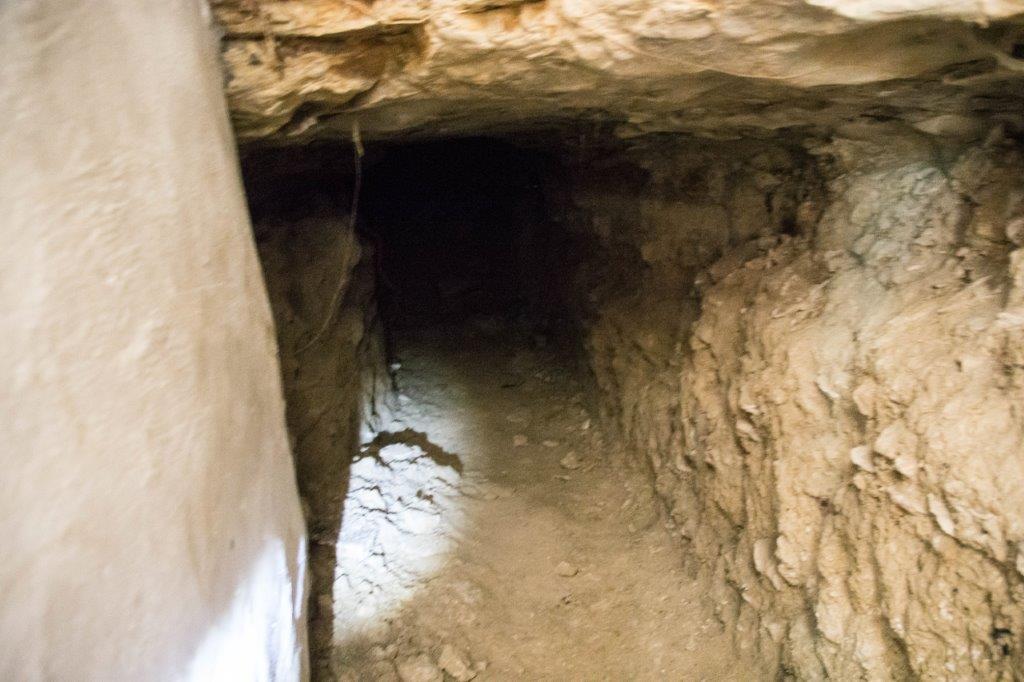
Matt went first, shining his phone light into the darkness. Then Goobie. Herc and I followed up the rear, the dim light from my torch just strong enough to show us where to put our next step.
The tree roots receded as we made our way deeper into the hillside. The path wasn’t flat and we climbed over little ridges in the rock and down the other side. Only Herc was able to stand up fully, his eyes wide in the darkness.
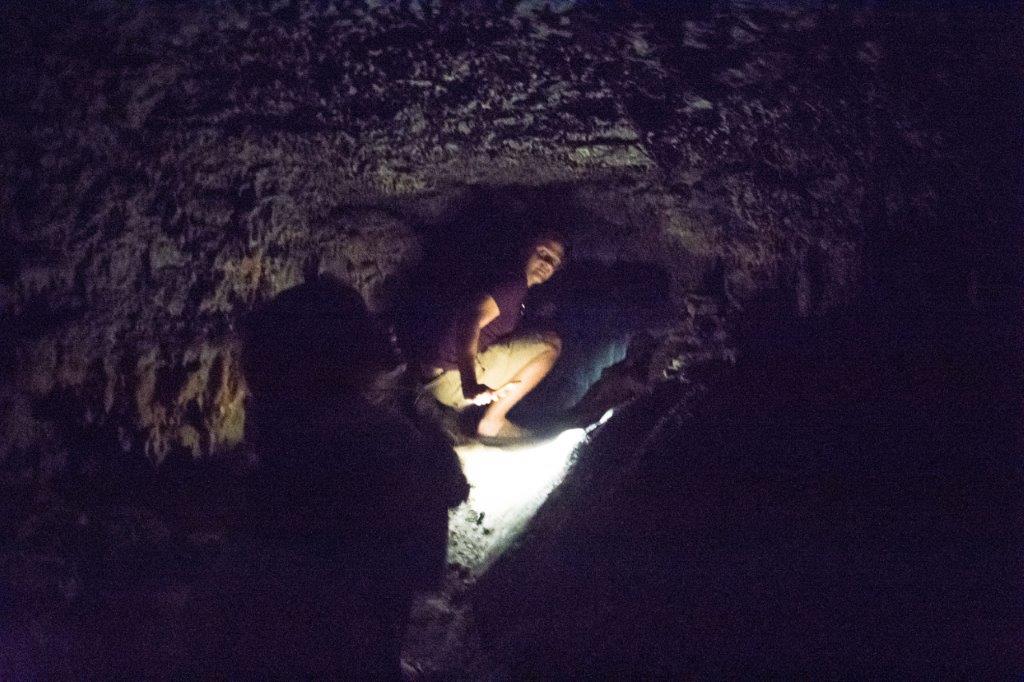
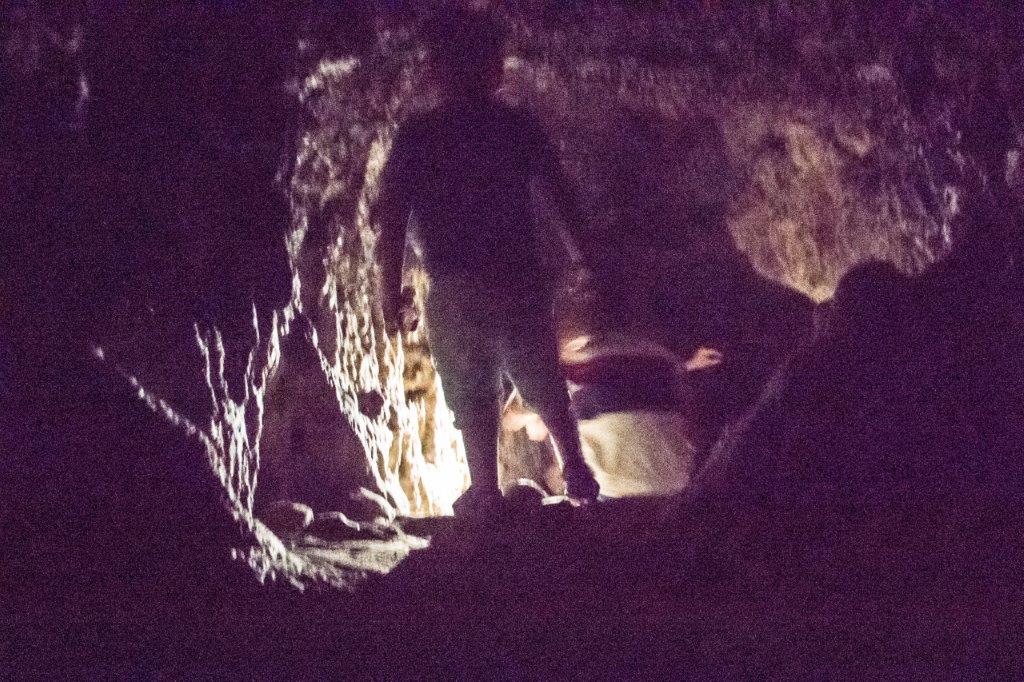
Overhead were countless mini stalactites, many broken, a possible sign that many people had walked this tunnel before.
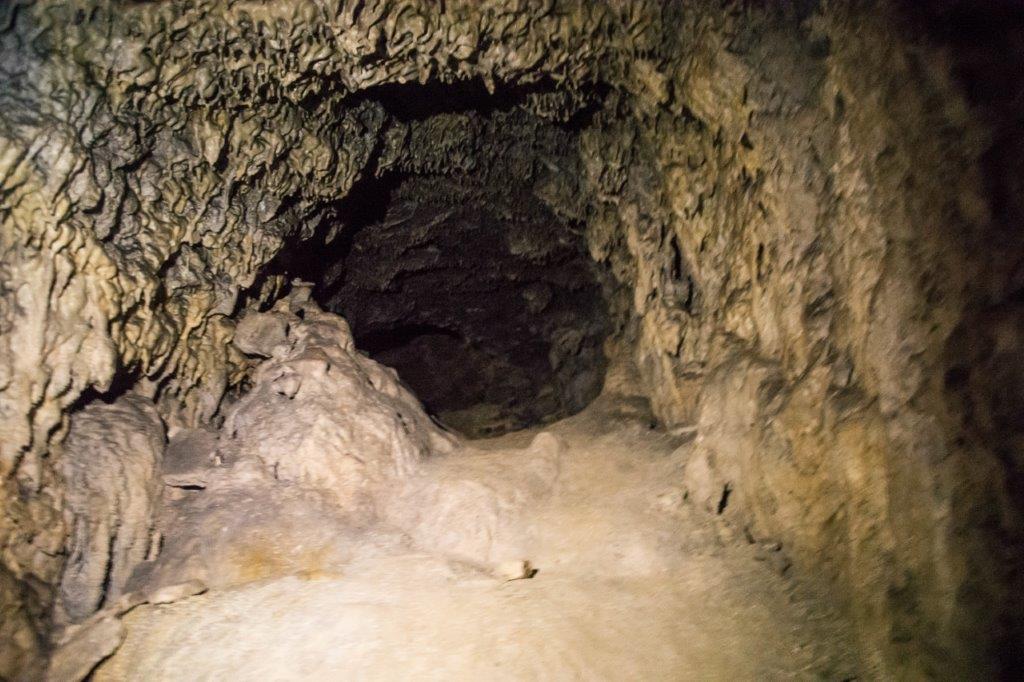
I looked down at my feet. Paphos Life had rightly advised on taking a good torch and wearing suitable clothes and footwear. We were using a phone torch and were in flip flops and short shorts. We’d brought sensible clothes but, in our excitement, had left them in the car. Whoops.
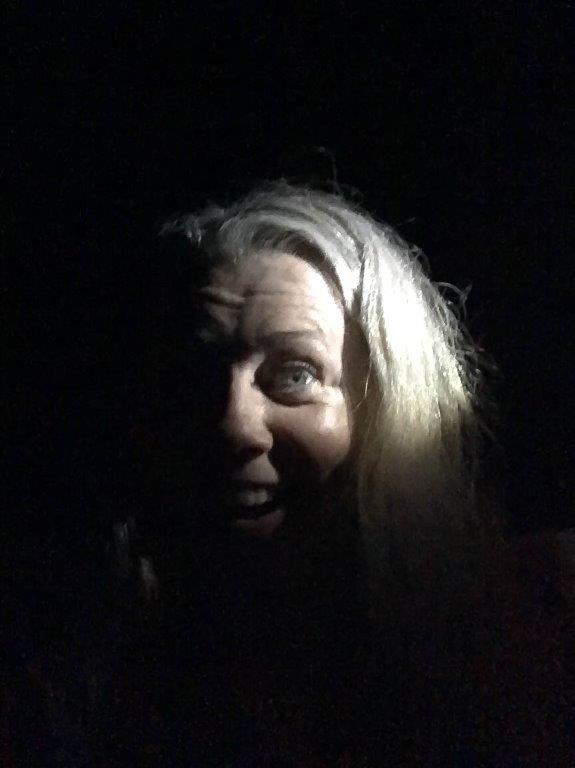
I have no idea how far in the tunnel took us. Finally we reached a slightly larger area where the tunnel made an abrupt 90-degree turn to the right. A few metres further on, it came to a dead end.
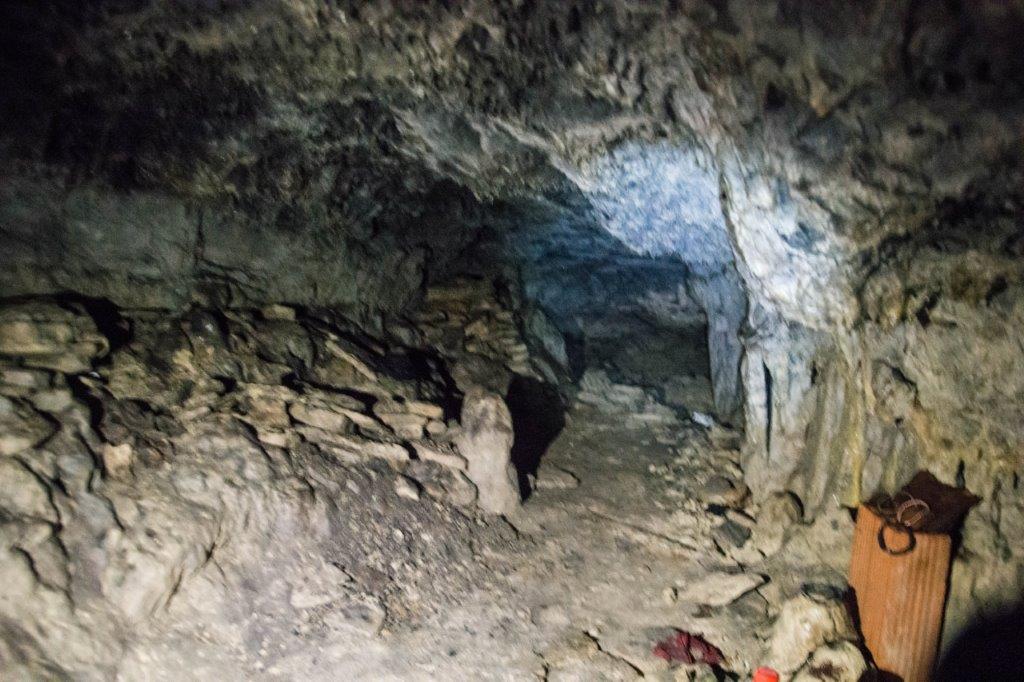
It felt as though we’d reached the most sacred part of this tunnel-cave. The walls were lined with interesting rock formations that were wet to touch. There were small shrines on the floor. Used candles and bottles for fuel. The floor had been dry until this point but here there were shallow, muddy puddles.
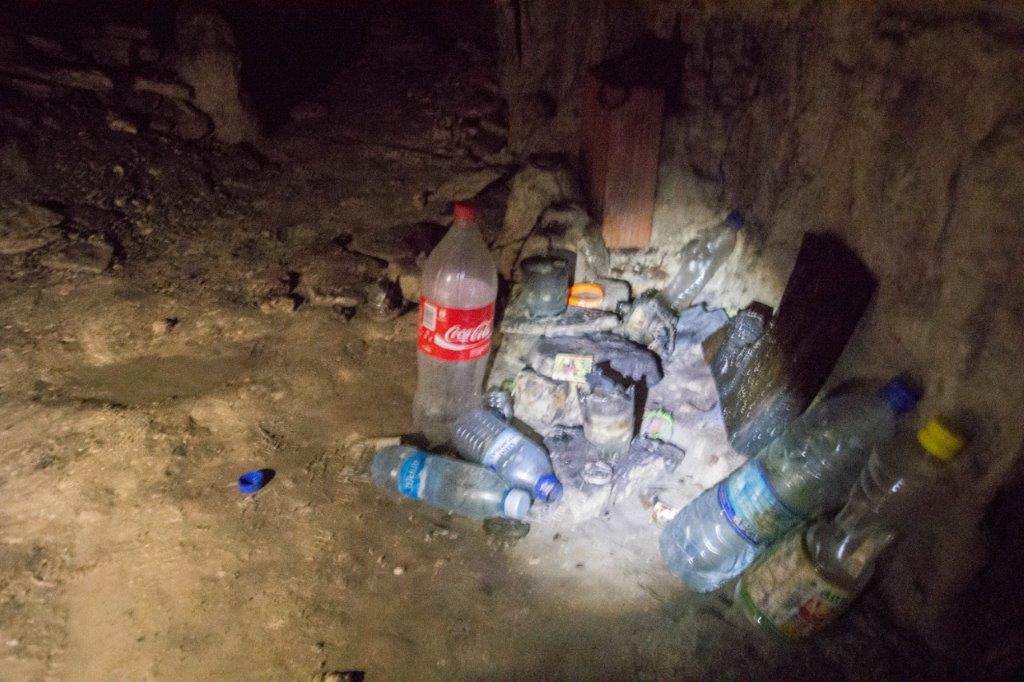
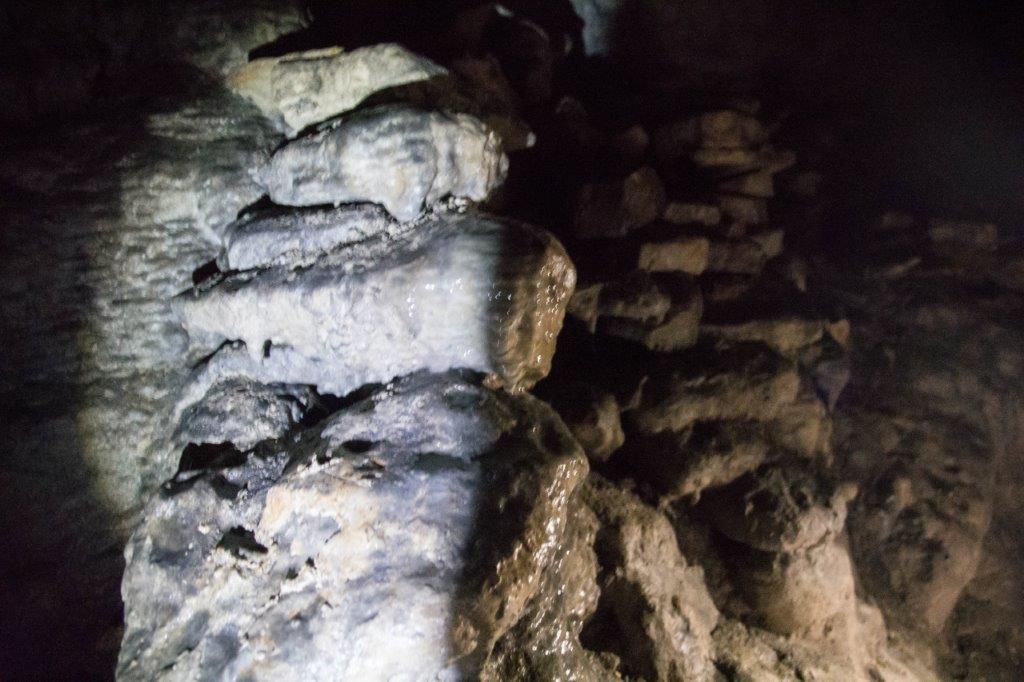
It was here that I really cursed my weak torch. Without good light, my photos were rubbish! Blurry and noisy. If you want to see better photos of this amazing tunnel, go to the Paphos Life blog. He had great lighting and, I suspect, no toddler holding his hand.
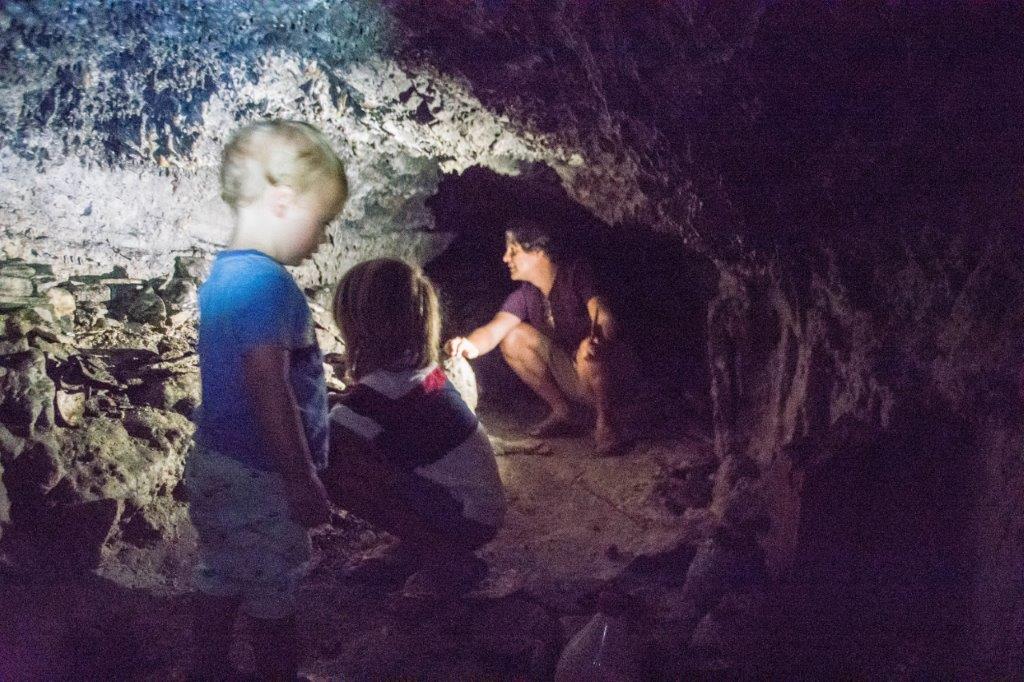
‘I want a cuddle,’ came Herc’s little voice in the semi-darkness. He’d been totally quiet the whole way, his eyes wide with an expression that said ‘WTF have my parents brought me this time??’
‘I want to go home.’ he said.
Goobie lost his nerve at this point too. ‘Yes, I’m getting out of here.’
It was time to head back. Goobie took the phone and led the way.
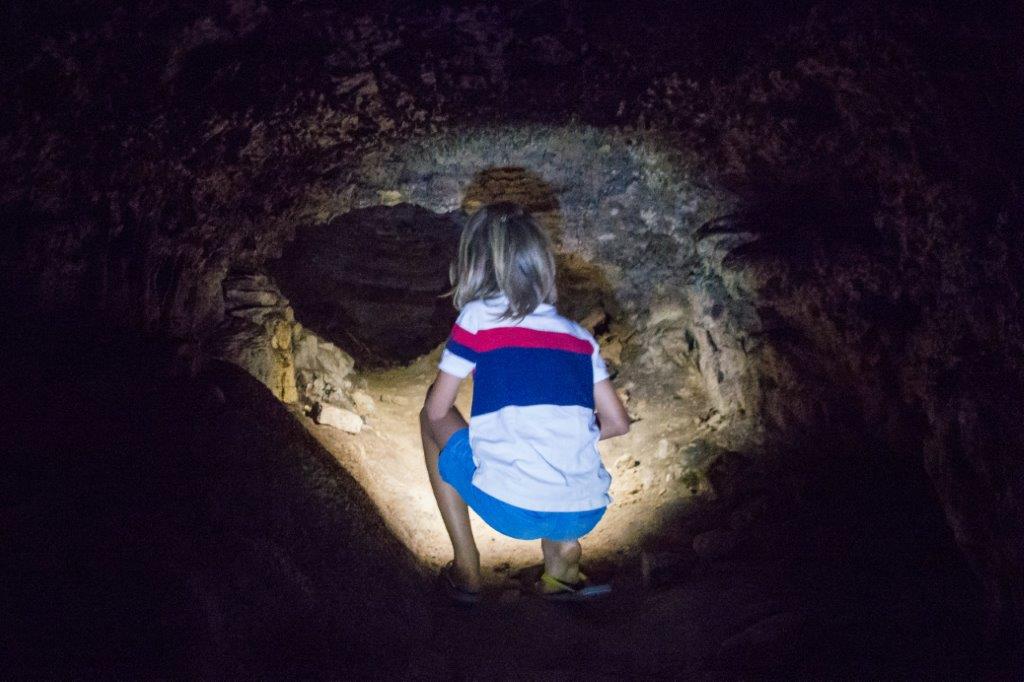
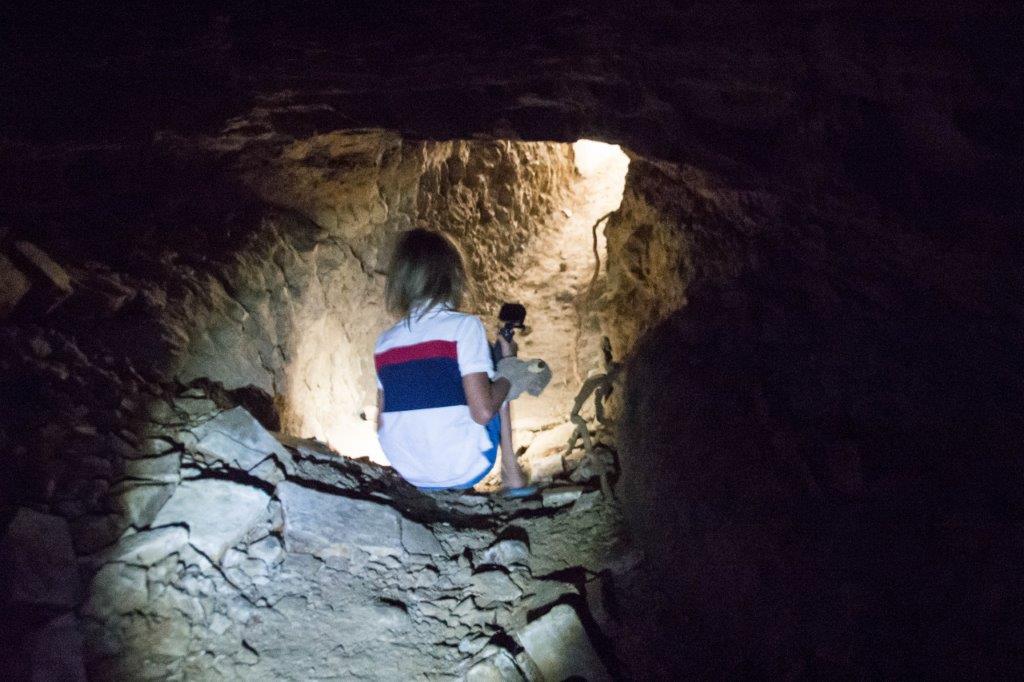
What surprised me about this place is that despite the intimidating entrance, the low ceilings and deep, deep darkness, I felt completely calm as we explored the tunnel. I love subterranean places and yet when I’m in them I can be surprisingly wussy. Take the Küçük Erenköy tunnel for example. Or the Elisis Kastros cave tomb. I worry about rockfalls, being trapped, spiders jumping on my head, monsters, you name it. And yet here, total peace.
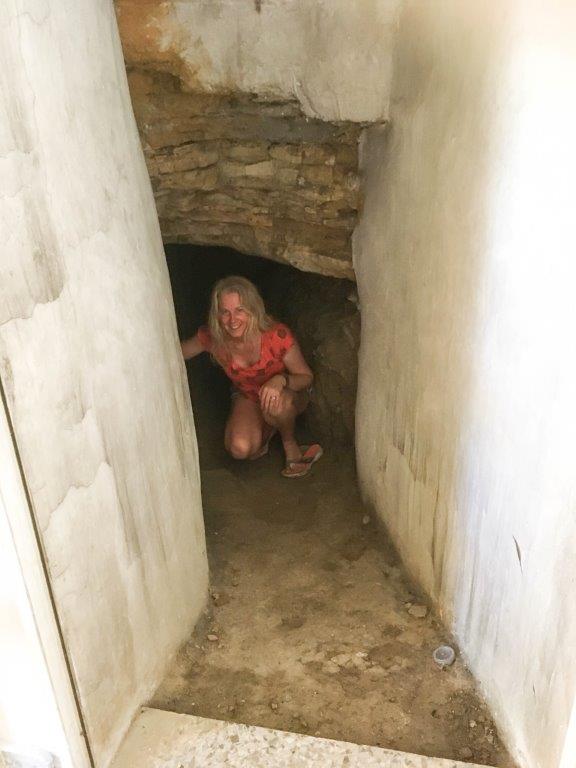
It had been our first family adventure, post-lockdown. A tunnel behind a boring-looking door in a church hidden in the hills. It was the stuff of Enid Blyton books. Yet, for countless people over countless years, this has been a beloved and sacred place of worship. How long have people been coming here? What is its history? I wish I knew. I can find nothing else about it online.
This tiny church isn’t giving up its secrets easily.
Hello Julia. The story of the chapel is that a woman, named Anna Vasou, suffering from an incurable disease, had a vision where Saint Helen asked her to remove a pile of dirt thus exposing the cave with Her holy water, ‘agiasma’ in greek. When she did as the Saint instructed het, the woman was cured and built the chapel in 1986. I had never heard of this chapel, but Googled its name in greek after reading your post. I have been enjoying reading about your adventures. Keep well.
2 Comments